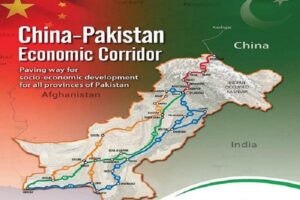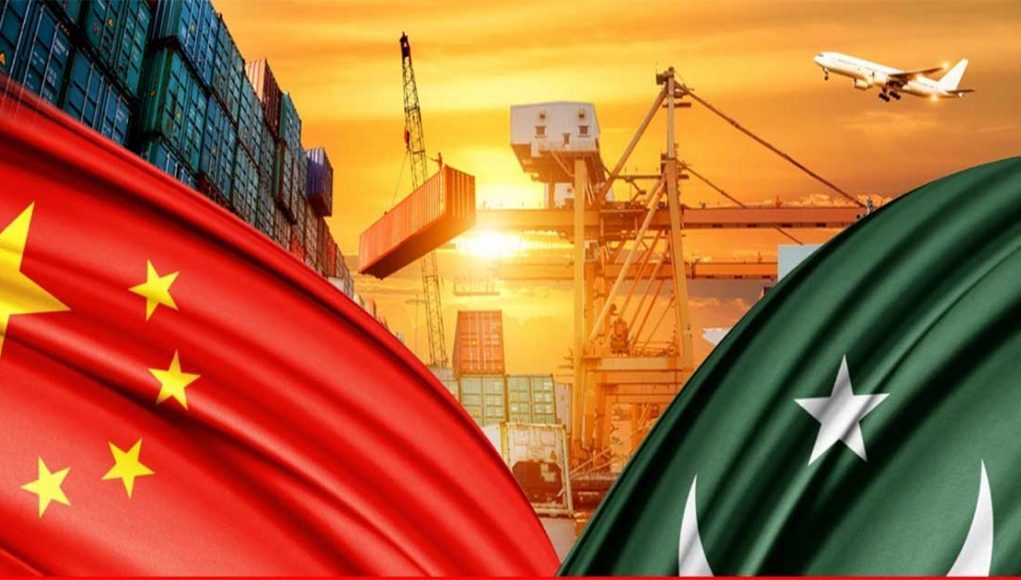
By Dr Mehmood Ul Hassan Khan
Elite oriented model of Pakistan’s economy badly needs initiation, implementation and completion of CPEC projects in the country. Due to skyrocketing inflation the ratios of poverty and unemployment are getting momentum which can be reduced through completion of numerous mega projects of socio-economic development in the country.
The formation of Special Investment Facilitation Council (SIFC) is now accelerating the inflows of Foreign Direct Investments (FDIs). The combination of CPEC and SIFC would be an ideal platform to streamline all pending issues and remove all existing bureaucratic hurdles in the country.
CPEC in 2023 achieved great success and lots of social development projects have been completed. According to caretaker Minister for Planning, Development and Special Initiatives 36 projects with a cumulative value of US$24 billion have been successfully completed under the CPEC.
Additionally, 22 projects with a total investment of US$5 billion are currently under construction. Negotiations are underway for 26 projects, totalling US$27 billion under the CPEC framework. Furthermore, 27 other projects dedicated to the social and economic development of Balochistan are actively under implementation.
The development of Gwadar city and Gwadar port remains a central focus of CPEC. CPEC 27 other projects aims at Balochistan’s social and economic development are actively underway. The master plan for Gwadar city, the East Expressway, and an international airport showcase the progress. The first phase of the Gwadar Free Zone covering 60 acres has been completed, with Phase-2 in progress. 
Various completed projects, such as the Pakistan China Vocational and Technical Institute and the 1.2 MGD desalination plant show strategic social development of CPEC.
The Pak-China Friendship Hospital with 300 beds and modern facilities, along with the completion of the port-dredging project is near to completion. The China-Pakistan Joint Horticulture Laboratory in Quetta, the distribution of ten thousand solar lighting units, and the establishment of a 20-bed burn center and medical emergency center in Quetta confirm CPEC’s contribution in Balochistan.
Furthermore, Phase-1 of the Bostan Economic Zone has been completed, with Phase-2 currently under consideration by the Balochistan government.
Furthermore, signing of ML-I project and many other mega projects during the visit of caretaker prime minister Anwar Ul Haq Kakar to China will beneficial to country after the completion and the macro-economy of Pakistan would be in better position.
The BRI is now rapidly changing the lives of common people in Middle East region. In Saudi Arabia and the United Arab Emirates, Chinese-made intelligent logistics robots are successfully transforming their states, societies and systems.
In Dubai, Chinese built robots are patrolling the city’s malls and tourist attractions. It also injects new impetus into the region’s economic diversification goal.
Hopefully, in future, the BRI will continue to prevail and progress toward digitalization, qualitative industrialization, technological innovation and green energy. It seems that greater emphasis will be prioritized on high-quality and sustainable development to counter the prevailing disruptions in the global supply chains because of unilateral sanctions of the US against China.
The BRI will assist the member countries and the world into a joint sustainable path achieving new levels of modernization and opening-up. So far more than 3000 projects have been completed in the last decade and completion of more projects will further enhance its strategic importance in the future.
Undoubtedly, year 2024 can be a new starting point for high-quality BRI cooperation and stimulate efforts to build a global community of shared future.
In Saudi Arabia, Chinese AI enterprises standing at the culminated development of BRI in the first decade are now planning to bolster tech ties with the local markets.
Interestingly, China-based SenseTime has signed a deal with Saudi Company for Artificial Intelligence (SCAI) to jointly build a state-of-the-art AI lab in Saudi Arabia, to train local high-end AI talents and advance the country’s AI-tech ecosystem. It will give the immense economic, social benefits to deepening AI cooperation in fields including digital infrastructure, smart city, smart tourism, smart industrial park, healthcare, and autonomous driving.
Chinese leading new energy vehicle (NEV)-maker BYD will build an assembly plant in Hungary, which is its first European EV production factory. Hungary was the first European country to sign a BRI cooperation document with China in 2015.
Technological and digital cooperation, as well as green development are also listed among the new sectors for BRI cooperation in the next decade will be the new economic drivers in all the member countries.
In summary, President Xi pinpointed eight major steps China will take to support high-quality BRI cooperation, including continuing to promote green development. China will implement the Green Investment Principles for the BRI.
China will initiate green energies financing and sustainable infrastructure as part of the BRI which will enhance its overall capacity to decarbonize economies of the member countries. Thus BRI will be the biggest climate change neutralizer in the future in the world.
In Southeast Asia, Chinese firms are fostering the region’s green transformation. In November 2023, state-owned Power Construction Corporation of China (PowerChina) signed a deal with Thai enterprise to jointly build a 1,000-megawattwind power project in Laos, which is said to be the largest in Southeast Asia by completion.
According to the Chinese official figures, by 2040, BRI is projected to boost world GDP by US$7.1 trillion per year, and this raises world GDP by 4.2 percent of likely GDP in 2040.
The BRI will offer a holistic and comprehensive road map about the common path to global modernization, especially for its member countries and developing countries. Moreover, the Chinese global modernization will assist BRI’s ultimate goal to build a global community of shared future.
It seems that BRI in the next decade will be balanced and foster common development through cooperation and joint governance in the member countries and around the globe.
It is suggested to immediately adjust BRI implementation to adapt to an ever-evolving global environment to successfully counter rising global economic uncertainties, supply chain fragmentation and enlarging divisions in the coming years.
2024 marks the beginning year of the second decade of BRI journey. The development of BRI should be judged as a long march and its vision’s implementation is long-term, systematic and of large-scale. (The writer is: Executive Director, Center for South & International Studies (CSAIS) Islamabad, Regional Expert: China, CPEC & BRI)


